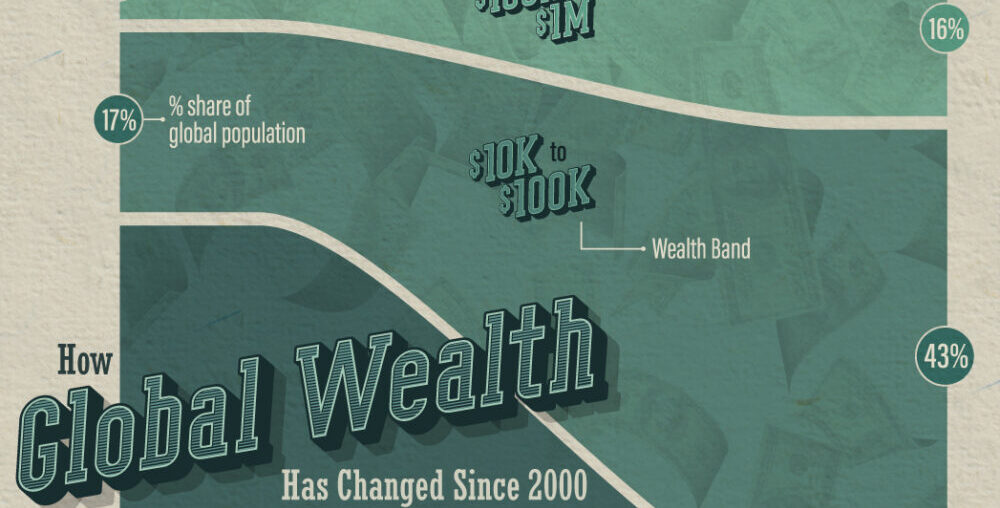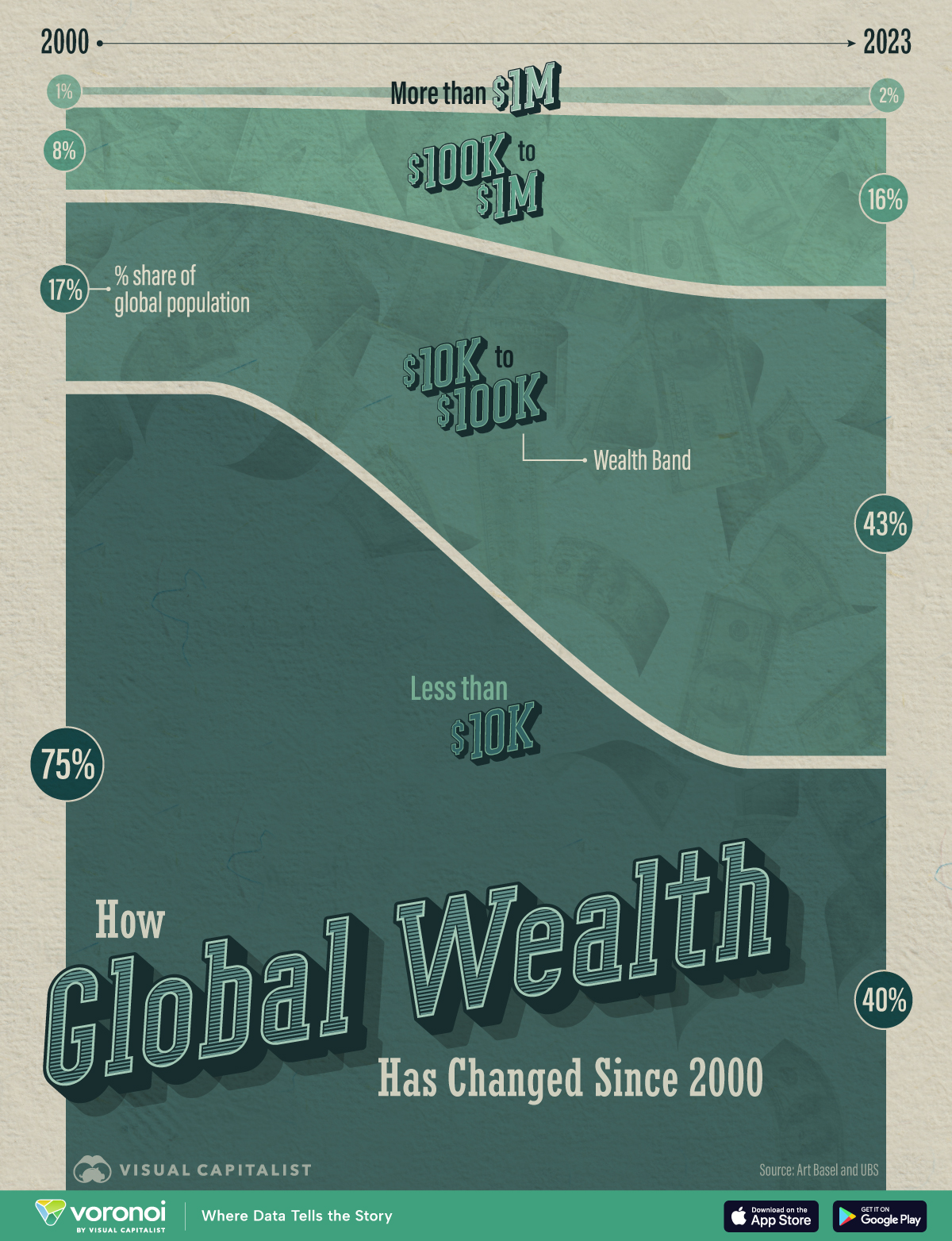![]()
![]()
How the Global Distribution of Wealth Has Changed (2000-2023)
This was originally posted on our Voronoi app. Download the app for free on iOS or Android and discover incredible data-driven charts from a variety of trusted sources.
People worldwide are becoming increasingly wealthier—and not just those who already own great wealth.
Over recent decades, the share of the global population with wealth between $10,000 and $100,000 has more than doubled, while the group in the lowest wealth segment (less than $10,000) has been nearly cut in half.
This graphic illustrates the shifts in global wealth distribution between 2000 and 2023, based on data from Art Basel and UBS.
Key Takeaways
The percentage of adults in the lowest wealth segment (under $10,000) decreased from 75% in 2000 to 40% in 2023. Most of these individuals reside in poorer countries, predominantly in Africa.
Meanwhile, the group with wealth between $10,000 and $100,000 has seen the most significant growth over the last two decades.
| Year | < $10k | $10k-$100k | $100k-$1m | > $1m |
|---|---|---|---|---|
| 2000 | 75% | 17% | 8% | 1% |
| 2010 | 56% | 32% | 12% | 1% |
| 2019 | 57% | 33% | 10% | 1% |
| 2022 | 53% | 34% | 12% | 1% |
| 2023 | 40% | 43% | 16% | 2% |
While the share of millionaires has doubled since 2000, they still account for only 2% of the global population. North America and the Middle East have experienced the largest percentage increase in the number of millionaires since 2016, with +52% and +50% growth, respectively.
Individuals with assets worth $100,000–$1 million have grown from 8% to 16% of the population.
According to UBS, the data shows that in every wealth band and over any time horizon, it’s consistently likelier for people to climb up the wealth ladder than slip down it, at least on a global level.


